| View previous topic :: View next topic |
| Author |
Message |
Oldhand


Joined: 01 Apr 2013
Posts: 6008
Location: Mid North Coast NSW - Australia
|
 Posted: Thu Jan 07, 2016 10:15 pm Post subject: Sonnar? Posted: Thu Jan 07, 2016 10:15 pm Post subject: Sonnar? |
 |
|
Oldhand wrote:
Just struggling to understand what makes a sonnar design - or a sonnar derived design, for a lens.
Are these two lens designs sonnar derivatives?
I think maybe the first is but am unsure about the second.
Thanks for your input
OH
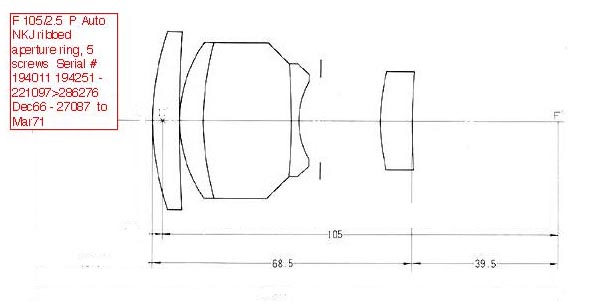
 |
|
| Back to top |
|
 |
Gerald


Joined: 25 Mar 2014
Posts: 1196
Location: Brazil
|
 Posted: Thu Jan 07, 2016 10:36 pm Post subject: Re: Sonnar? Posted: Thu Jan 07, 2016 10:36 pm Post subject: Re: Sonnar? |
 |
|
Gerald wrote:
This is probably the most comprehensive article on the Sonnar lenses and derivatives:
http://www.marcocavina.com/articoli_fotografici/Bertele_Sonnar/00_pag.htm
The article is in Italian but the Google translator might help.
_________________
If raindrops were perfect lenses, the rainbow did not exist. |
|
| Back to top |
|
 |
Oldhand


Joined: 01 Apr 2013
Posts: 6008
Location: Mid North Coast NSW - Australia
|
 Posted: Fri Jan 08, 2016 12:19 am Post subject: Re: Sonnar? Posted: Fri Jan 08, 2016 12:19 am Post subject: Re: Sonnar? |
 |
|
Oldhand wrote:
Thank you Gerald.
That is a wonderful link.
So, if I am reading it correctly, then both of the lens diagrams above are sonnar derivatives.
The first is if course the Nikkor - P 2.5/105 and the second is the Canon FL 3.5/135
OH |
|
| Back to top |
|
 |
Gerald


Joined: 25 Mar 2014
Posts: 1196
Location: Brazil
|
 Posted: Fri Jan 08, 2016 12:42 am Post subject: Re: Sonnar? Posted: Fri Jan 08, 2016 12:42 am Post subject: Re: Sonnar? |
 |
|
Gerald wrote:
| Oldhand wrote: |
So, if I am reading it correctly, then both of the lens diagrams above are sonnar derivatives.
The first is if course the Nikkor - P 2.5/105 and the second is the Canon FL 3.5/135
OH |
Yes, both lenses are Sonnar derivatives. In my understanding, the Sonnar weak point is the performance degradation for short distances of focus. This is due to the highly asymmetric Sonnar optical structure. No doubt Nikon designers knew very well that characteristic of Sonnar:
http://www.nikkor.com/story/0045/
The second version of the Nikkor 105mm F2.5 uses a little more symmetrical optical structure, so improving performance for short focus distances, which is certainly important in a lens for portraiture.
_________________
If raindrops were perfect lenses, the rainbow did not exist. |
|
| Back to top |
|
 |
IAZA


Joined: 16 Apr 2010
Posts: 2587
Location: Indonesia
|
 Posted: Fri Jan 08, 2016 1:13 am Post subject: Posted: Fri Jan 08, 2016 1:13 am Post subject: |
 |
|
IAZA wrote:
This is good source too
http://forum.mflenses.com/list-of-lens-diagrams-triplets-planars-and-hybrid-lenses-t22934.html
_________________
nex5, Olympus EPM1, yashica half 14, Canon eos 650 want to see samples of mine? please click My lenses
and My gallery
~Suat~ |
|
| Back to top |
|
 |
Oldhand


Joined: 01 Apr 2013
Posts: 6008
Location: Mid North Coast NSW - Australia
|
 Posted: Fri Jan 08, 2016 2:14 am Post subject: Posted: Fri Jan 08, 2016 2:14 am Post subject: |
 |
|
Oldhand wrote:
Thanks Gerald and Suat
Great references.
OH |
|
| Back to top |
|
 |
uhoh7

Joined: 24 Nov 2010
Posts: 1300
Location: Idaho, USA
|
 Posted: Fri Jan 08, 2016 5:48 am Post subject: Posted: Fri Jan 08, 2016 5:48 am Post subject: |
 |
|
uhoh7 wrote:
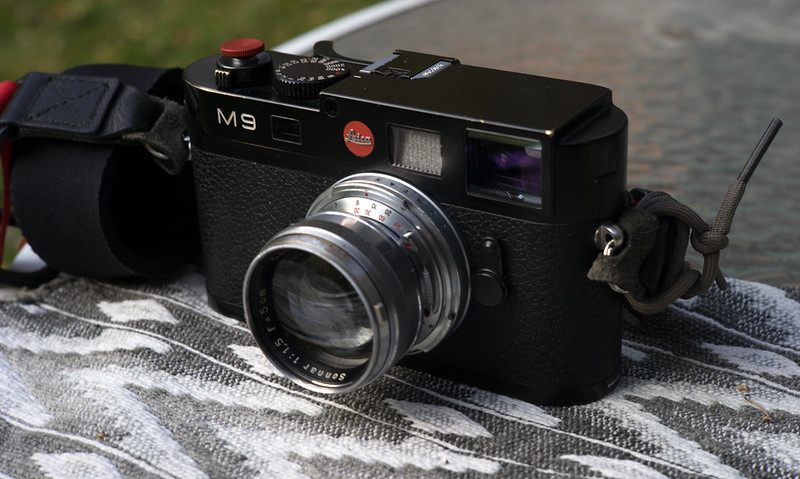 The Real Thing by unoh7, 1937 CZJ Sonnar The Real Thing by unoh7, 1937 CZJ Sonnar
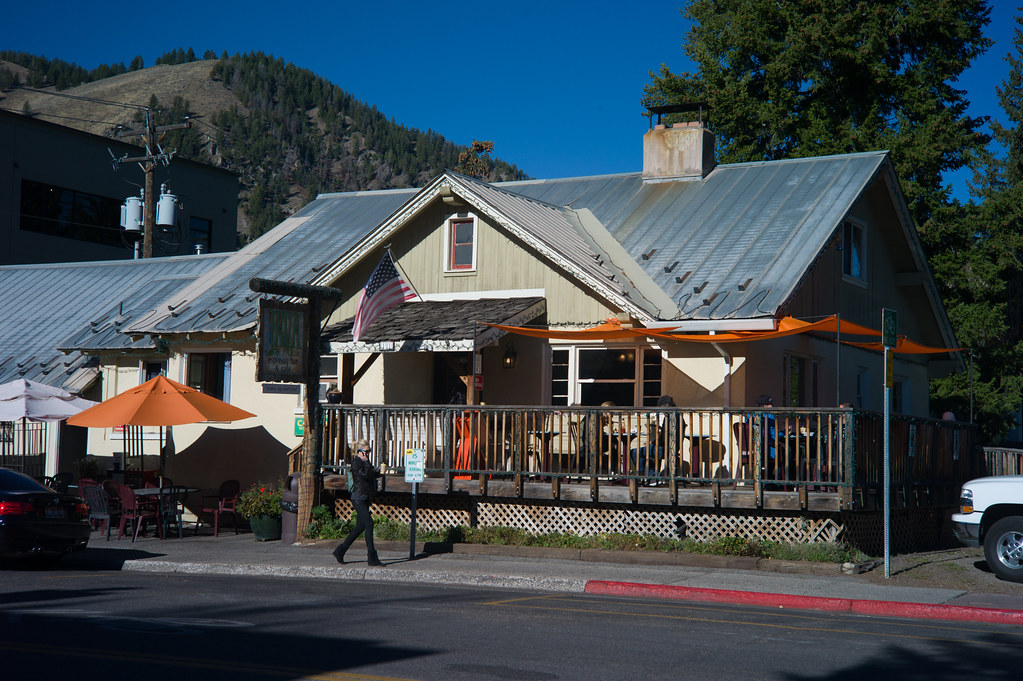 jena blue by unoh7, F/8 jena blue by unoh7, F/8
Superb contrast, great flare resistance.

Shy Friend by unoh7, Wide Open
unique bokeh WO, too wild for some:

L1022938 by unoh7, on Flickr
Descended from the Ernostar, first candid low light system, the above lens was the first to bear the "Sonnar" name, I think. It was definitely the lens which made the reputation.
another very famous sonnar:

Nikkor S 85/2 by unoh7, Nikkor 85/2 Sonnar 220,000 made.

Menus by unoh7, on Flickr
and the fastest Sonnar ever made:
 Sonne by unoh7, Sonnetar 50/1.1 circa 2015 Sonne by unoh7, Sonnetar 50/1.1 circa 2015

Coffee Baron by unoh7, Sonnetar on M9

Cold Comfort by unoh7, Sonnetar on A7.mod
What do they have in common besides a similar formula? Hellacious sharp centers. Great contrast, old or new. A bokeh which becomes charming and identifiable once you drop from the fastest speeds.
But if you insist on the extremes:
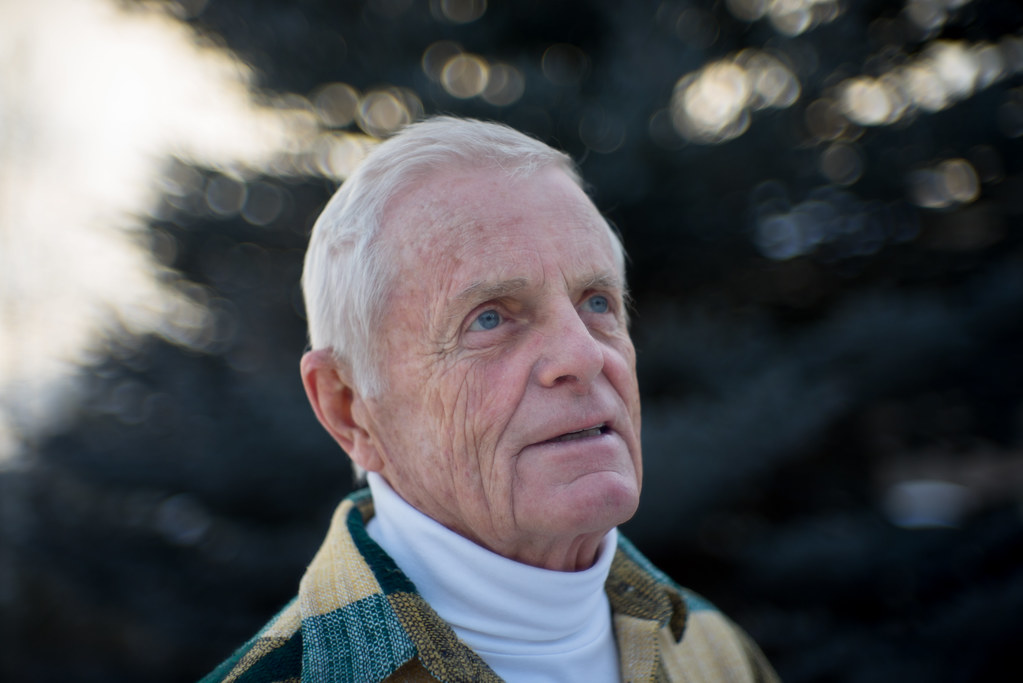
Vic by unoh7, Nikkor 50/1.4 Sonnar.
The bokeh will become a major part of the composition.
_________________
Making MFlenses safe for the letter *L*  |
|
| Back to top |
|
 |
kds315*


Joined: 12 Mar 2008
Posts: 16541
Location: Weinheim, Germany
Expire: 2021-03-09
|
 Posted: Fri Jan 08, 2016 10:44 am Post subject: Posted: Fri Jan 08, 2016 10:44 am Post subject: |
 |
|
kds315* wrote:
I always liked them, Dr Bertele did a fantatsic job in creating them!
Great examples!!
_________________
Klaus - Admin
"S'il vient a point, me souviendra" [Thomas Bohier (1460-1523)]
http://www.macrolenses.de for macro and special lens info
http://www.pbase.com/kds315/uv_photos for UV Images and lens/filter info
https://www.flickr.com/photos/kds315/albums my albums using various lenses
http://photographyoftheinvisibleworld.blogspot.com/ my UV BLOG
http://www.travelmeetsfood.com/blog Food + Travel BLOG
https://galeriafotografia.com Architecture + Drone photography
Currently most FAV lens(es):
X80QF f3.2/80mm
Hypergon f11/26mm
ELCAN UV f5.6/52mm
Zeiss UV-Planar f4/60mm
Zeiss UV-Planar f2/62mm
Lomo Уфар-12 f2.5/41mm
Lomo Зуфар-2 f4.0/350mm
Lomo ZIKAR-1A f1.2/100mm
Nikon UV Nikkor f4.5/105mm
Zeiss UV-Sonnar f4.3/105mm
CERCO UV-VIS-NIR f1.8/45mm
CERCO UV-VIS-NIR f4.1/94mm
CERCO UV-VIS-NIR f2.8/100mm
Steinheil Quarzobjektiv f1.8/50mm
Pentax Quartz Takumar f3.5/85mm
Carl Zeiss Jena UV-Objektiv f4/60mm
NYE OPTICAL Lyman-Alpha II f1.1/90mm
NYE OPTICAL Lyman-Alpha I f2.8/200mm
COASTAL OPTICS f4/60mm UV-VIS-IR Apo
COASTAL OPTICS f4.5/105mm UV-Micro-Apo
Pentax Ultra-Achromatic Takumar f4.5/85mm
Pentax Ultra-Achromatic Takumar f5.6/300mm
Rodenstock UV-Rodagon f5.6/60mm + 105mm + 150mm
|
|
| Back to top |
|
 |
LucisPictor


Joined: 26 Feb 2007
Posts: 17633
Location: Oberhessen, Germany / Maidstone ('95-'96)
Expire: 2013-12-03
|
 Posted: Fri Jan 08, 2016 5:33 pm Post subject: Posted: Fri Jan 08, 2016 5:33 pm Post subject: |
 |
|
LucisPictor wrote:
Amazing images, unoh7!!
What a beautiful young lady!
And Anthony Hopkins in the last frame is also well captured. 
_________________
Personal forum activity on pause every now and again (due to job obligations)!
Carsten, former Moderator 
Things ON SALE
Carsten = "KAPCTEH" = "Karusutenu" | T-shirt?.........................My photos from Emilia: http://www.schouler.net/emilia/emilia2011.html
My gear: http://retrocameracs.wordpress.com/ausrustung/
Old list: http://forum.mflenses.com/viewtopic.php?t=65 (Not up-to-date, sorry!) | http://www.lucispictor.de | http://www.alensaweek.wordpress.com |
http://www.retrocamera.de |
|
| Back to top |
|
 |
vanylapep


Joined: 03 Jan 2014
Posts: 312
|
 Posted: Fri Jan 08, 2016 8:27 pm Post subject: Posted: Fri Jan 08, 2016 8:27 pm Post subject: |
 |
|
vanylapep wrote:
How do lens design work?
Somebody comes up with a "Sonnar" design, then whoever design lens like the "Sonnar" blueprint has to pay license/royalty/copyright fees?
Same for Planar design? What are all the possible lens designs? |
|
| Back to top |
|
 |
kds315*


Joined: 12 Mar 2008
Posts: 16541
Location: Weinheim, Germany
Expire: 2021-03-09
|
 Posted: Sat Jan 09, 2016 8:37 am Post subject: Posted: Sat Jan 09, 2016 8:37 am Post subject: |
 |
|
kds315* wrote:
| vanylapep wrote: |
How do lens design work?
Somebody comes up with a "Sonnar" design, then whoever design lens like the "Sonnar" blueprint has to pay license/royalty/copyright fees?
Same for Planar design? What are all the possible lens designs? |
Ever heard the term "patent"? Most lens designs are patented worldwide. The Tessar made Dr Rudolph
a very wealthy man decades ago. https://en.wikipedia.org/wiki/Paul_Rudolph_%28physicist%29
And so also Dr Bertele https://en.wikipedia.org/wiki/Ludwig_Bertele with his Sonnar https://en.wikipedia.org/wiki/Zeiss_Sonnar
I woudd propose to read a book about it (Kingslake is teh most well known one) and here is some info about it: https://en.wikipedia.org/wiki/Optical_lens_design
_________________
Klaus - Admin
"S'il vient a point, me souviendra" [Thomas Bohier (1460-1523)]
http://www.macrolenses.de for macro and special lens info
http://www.pbase.com/kds315/uv_photos for UV Images and lens/filter info
https://www.flickr.com/photos/kds315/albums my albums using various lenses
http://photographyoftheinvisibleworld.blogspot.com/ my UV BLOG
http://www.travelmeetsfood.com/blog Food + Travel BLOG
https://galeriafotografia.com Architecture + Drone photography
Currently most FAV lens(es):
X80QF f3.2/80mm
Hypergon f11/26mm
ELCAN UV f5.6/52mm
Zeiss UV-Planar f4/60mm
Zeiss UV-Planar f2/62mm
Lomo Уфар-12 f2.5/41mm
Lomo Зуфар-2 f4.0/350mm
Lomo ZIKAR-1A f1.2/100mm
Nikon UV Nikkor f4.5/105mm
Zeiss UV-Sonnar f4.3/105mm
CERCO UV-VIS-NIR f1.8/45mm
CERCO UV-VIS-NIR f4.1/94mm
CERCO UV-VIS-NIR f2.8/100mm
Steinheil Quarzobjektiv f1.8/50mm
Pentax Quartz Takumar f3.5/85mm
Carl Zeiss Jena UV-Objektiv f4/60mm
NYE OPTICAL Lyman-Alpha II f1.1/90mm
NYE OPTICAL Lyman-Alpha I f2.8/200mm
COASTAL OPTICS f4/60mm UV-VIS-IR Apo
COASTAL OPTICS f4.5/105mm UV-Micro-Apo
Pentax Ultra-Achromatic Takumar f4.5/85mm
Pentax Ultra-Achromatic Takumar f5.6/300mm
Rodenstock UV-Rodagon f5.6/60mm + 105mm + 150mm
|
|
| Back to top |
|
 |
scsambrook


Joined: 29 Mar 2009
Posts: 2167
Location: Glasgow Scotland
Expire: 2011-11-18
|
 Posted: Sat Jan 09, 2016 4:04 pm Post subject: Posted: Sat Jan 09, 2016 4:04 pm Post subject: |
 |
|
scsambrook wrote:
Patents are interesting things which have ramifications which sometimes get overlooked.
Patents have a limited life, typically for 15 years in the days when these design appeared. Hence the plethora of "Tessar" and "Planar" patterns which came along once the patents had expired. Furthermore, depending on what exactly is protected by the patent, it may have been possible to create a design which although following the general principles of a "Tessar" or "Planar" was sufficiently different to avoid infringement. Patent protection was far from absolute or straightforward in some cases.
Sometimes the real degree of protection was eroded by other countries' own patent laws. In Britiain, for instance, a 1907 law required that if an "invention" (such as the Tessar lens design) was not being "worked" (i.e. manufactured) in Britain, then a domestic producer who wished to make it had to be granted a licence by the patent owner, irrespective of where he was located. To add to the difficulties of the holder of the patent, he was not permitted to demand an exhorbitant price for either the licence or royalties on units manufactured. The only means to maintain an absolute monopoly of the patented design was to set up for manufacture in the UK. Both Zeiss and Goerz opened what were claimed to be British manufacturing plants after 1907, although it's unclear as to whether they actually made anything, as opposed to assembling German-made components. Both had earlier licenced English firms to make their designs and by creating "factories" it's probable that they planned to refuse renewals when the originals expired..
_________________
Stephen
Equipment: Pentax DSLR for casual shooting, Lumix G1 and Fuji XE-1 for playing with old lenses, and Leica M8 because I still like the optical rangefinder system. |
|
| Back to top |
|
 |
woodrim


Joined: 14 Jan 2010
Posts: 4060
Location: Charleston
|
 Posted: Sat Jan 09, 2016 5:11 pm Post subject: Posted: Sat Jan 09, 2016 5:11 pm Post subject: |
 |
|
woodrim wrote:
Very nice collection of lenses, Uhoh.
_________________
Regards,
Woodrim |
|
| Back to top |
|
 |
stevemark

Joined: 29 Apr 2011
Posts: 3754
Location: Switzerland
|
 Posted: Sat Jan 09, 2016 10:55 pm Post subject: Posted: Sat Jan 09, 2016 10:55 pm Post subject: |
 |
|
stevemark wrote:
| Oldhand wrote: |
| Just struggling to understand what makes a sonnar design - or a sonnar derived design, for a lens. |
I have published an article about the Sonnars in the Swiss magazine "Fotospiegel" (No 142/2011). You can download it on my homepage:
http://artaphot.ch/images/Technik/Zeiss/Sonnar/FS142_History_ZeissSonnar_150dpi.pdf
Inside the article you'll find a lens scheme which represents the way from a simple, single lens to the Sonnars from the 1930s.
Basically the way was as follows:
1) single lens
2) achromatic doublet (correction of chromatic aberrations)
3) Triplet (Cooke, correction of astigmatism)
4) Ernostar ("Triplet" with double front lens => better correction of spherical aberrations => faster lens possible)
5) Sonnar ("Ernostar"-like, BUT with a low dispersion glass inserted between second and third lens of the Ernostar).
The "simple" trick of inserting a Low Disperion ("LD") glass between the 2nd and 3rd element of the Ernostar was in fact quite genious: Ludwig Bertele could solve two important problems at the same time:
a) by using the LD glass he could achieve a nearly apochromatic correction of the Sonnar 2/5cm and 2/8.5cm
b) by filling the gap between 2nd and 3rd element he could eliminate two air/glass surfaces: all his Sonnars had only three elements (even those with up to eight lenses!!). This was very important in the early 1930ies, since coating did not yet exist. The Leica / Leitz Xenon 1.5/5cm, which was a Planar derivative, hat seven lenses in five elements. Therefore its contrast was low (and way below of the Sonnar 1.5/5cm).
Basically i would define a classical Sonnar as a "Ernostar" type lens with a low dispersion element cemented in between the second and third lens of the "Ernostar".
| Oldhand wrote: |
Are these two lens designs sonnar derivatives?
I think maybe the first is but am unsure about the second.
|
If we have to decide whether a construction is "Sonnar-type" we need more than only the lens sections. As mentioned above, the typical characteristic of a Sonnar is the "low dispersion" lens introduced into the Ernostar design. I am, however, pretty sure that the Nikkor 2.5/105mm shown first is in fact an Sonnar-type lens.
Also the second lens (similar to the CZJ Sonnar 4/135mm or the Canon FD 3.5/135mm) is probably Sonnar-type lens, although a simplified version. Since we don't know the specification of the respective glasses, we can't be sure about the use of "low dispersion" glass. This simplified Sonnar becomes possible if there's a ideal combination of focal length (around 100mm) and not-too-fast aperture (around f4).
Ludwig Bertele was in fact one of the most remarkable lens designers. Even though he never had studied science, he designed a vast number of groundbraking lenses:
* the first fast lenses for medium format (Ernostar 2/10cm), around 1923-25
* the fasted lenses for 35mm cameras (Sonnars 2/5cm, 1.5/5cm, and 2/8.5cm for the Contax), around 1930-32
* the first fast tele lens for sports (2.8/18cm="Olympia-Sonnar"), 1936
* the first well corrected wideangle for 35mm cameras (Biogon 2.8/3.5cm), 1936
* ultra fast 1.5/15cm Sonnars for aerial photography (WW2)
* first well corrected superwide lens (Biogon 4.5/21mm), Swiss patent 1951
* extremely well corrected aerial lenses (the Aviogon series, manufactured by the Swiss company Wild Herrbrugg) with 90°-120° image field, 13x13cm or even 18x18cm film size, corner resolution of >100 LP wide open (250LP in the center), and a distotion of less about 0.004% (early 1950ties).
It's most remarkable that all these lenses were calculated without computers.
Bertele left Germany at the end of WWII, moved to Switzerland, and died there in 1985. He had lived in a small village next to where i grew up.
Stephan

_________________
www.artaphot.ch |
|
| Back to top |
|
 |
uhoh7

Joined: 24 Nov 2010
Posts: 1300
Location: Idaho, USA
|
 Posted: Sun Jan 10, 2016 5:21 am Post subject: Posted: Sun Jan 10, 2016 5:21 am Post subject: |
 |
|
uhoh7 wrote:
TY for kind words 
I have two RF 105/2.5 lenses (one is for contax)

DSC05920 by unoh7, on Flickr

a7r_nikkor_105mm_RF by unoh7, on Flickr

DSC01984 by unoh7, on Flickr
As most of you know, this lens was totally re-designed to make the later famous 105/2.5
I also have a 135/4 Zeiss pre-war, which I think is a sonnar  It's pretty beat up, but I should get some samples. It's pretty beat up, but I should get some samples.
_________________
Making MFlenses safe for the letter *L*  |
|
| Back to top |
|
 |
kds315*


Joined: 12 Mar 2008
Posts: 16541
Location: Weinheim, Germany
Expire: 2021-03-09
|
 Posted: Sun Jan 10, 2016 9:26 am Post subject: Posted: Sun Jan 10, 2016 9:26 am Post subject: |
 |
|
kds315* wrote:
| stevemark wrote: |
....
Ludwig Bertele was in fact one of the most remarkable lens designers. Even though he never had studied science, he designed a vast number of groundbraking lenses:
* the first fast lenses for medium format (Ernostar 2/10cm), around 1923-25
* the fasted lenses for 35mm cameras (Sonnars 2/5cm, 1.5/5cm, and 2/8.5cm for the Contax), around 1930-32
* the first fast tele lens for sports (2.8/18cm="Olympia-Sonnar"), 1936
* the first well corrected wideangle for 35mm cameras (Biogon 2.8/3.5cm), 1936
* ultra fast 1.5/15cm Sonnars for aerial photography (WW2)
* first well corrected superwide lens (Biogon 4.5/21mm), Swiss patent 1951
* extremely well corrected aerial lenses (the Aviogon series, manufactured by the Swiss company Wild Herrbrugg) with 90°-120° image field, 13x13cm or even 18x18cm film size, corner resolution of >100 LP wide open (250LP in the center), and a distotion of less about 0.004% (early 1950ties).
It's most remarkable that all these lenses were calculated without computers.
Bertele left Germany at the end of WWII, moved to Switzerland, and died there in 1985. He had lived in a small village next to where i grew up.
Stephan
|
Stephan, fantastic work you have done! Unfortunately this is not entirely correct, as Dr Bertele used a Zuse Z22 computer for his lens design compuations from 1959 onwards. He used it in Heerbrugg and later he had it installed in his home in Switzerland (Wildhaus in Toggenburg), read here about it (in German): http://www.sps.ch/en/articles/physics-anecdotes/werdegang-der-industriellen-optikentwicklung-in-heerbrugg-vom-strahlen-berechnenden-damenkollektiv-zur-auswertung-kollektiver-strahldaten-12/ 150 electron valves had to be checked and eventually replaced EVERY WEEK by a service tech who visited him!!

Zuse Z22 installed in Heerbrugg
_________________
Klaus - Admin
"S'il vient a point, me souviendra" [Thomas Bohier (1460-1523)]
http://www.macrolenses.de for macro and special lens info
http://www.pbase.com/kds315/uv_photos for UV Images and lens/filter info
https://www.flickr.com/photos/kds315/albums my albums using various lenses
http://photographyoftheinvisibleworld.blogspot.com/ my UV BLOG
http://www.travelmeetsfood.com/blog Food + Travel BLOG
https://galeriafotografia.com Architecture + Drone photography
Currently most FAV lens(es):
X80QF f3.2/80mm
Hypergon f11/26mm
ELCAN UV f5.6/52mm
Zeiss UV-Planar f4/60mm
Zeiss UV-Planar f2/62mm
Lomo Уфар-12 f2.5/41mm
Lomo Зуфар-2 f4.0/350mm
Lomo ZIKAR-1A f1.2/100mm
Nikon UV Nikkor f4.5/105mm
Zeiss UV-Sonnar f4.3/105mm
CERCO UV-VIS-NIR f1.8/45mm
CERCO UV-VIS-NIR f4.1/94mm
CERCO UV-VIS-NIR f2.8/100mm
Steinheil Quarzobjektiv f1.8/50mm
Pentax Quartz Takumar f3.5/85mm
Carl Zeiss Jena UV-Objektiv f4/60mm
NYE OPTICAL Lyman-Alpha II f1.1/90mm
NYE OPTICAL Lyman-Alpha I f2.8/200mm
COASTAL OPTICS f4/60mm UV-VIS-IR Apo
COASTAL OPTICS f4.5/105mm UV-Micro-Apo
Pentax Ultra-Achromatic Takumar f4.5/85mm
Pentax Ultra-Achromatic Takumar f5.6/300mm
Rodenstock UV-Rodagon f5.6/60mm + 105mm + 150mm
|
|
| Back to top |
|
 |
Gerald


Joined: 25 Mar 2014
Posts: 1196
Location: Brazil
|
 Posted: Sun Jan 10, 2016 7:10 pm Post subject: Posted: Sun Jan 10, 2016 7:10 pm Post subject: |
 |
|
Gerald wrote:
Today Sonnar is just a trade name owned by Zeiss with maybe a single exception I will comment later. That is, the name Sonnar as used by Zeiss and Sony has no longer any technical meaning. Even in the past, there were so many variants of Sonnar (well described in the article by Marco Cavina) that the concept of Sonnar became a little confused.
The hallmark of the Sonnar lenses was a thick and heavy cemented triplet. In the CZJ Sonnar 180mm F2.8, which was a very common lens for use with Pentacon Six cameras, only the front group with the cemented triplet weighed 560 grams. In comparison, a complete Olympus Zuiko 180mm F2.8 weighed only 700 grams. You can imagine how many tons of optical glasses were consumed in East Germany just to produce so many Sonnar 180mm F2.8 lenses!
The truth is that the Sonnar designs for fast normal lenses (focal length around 50mm and apertures larger than F2) were surpassed by the Double Gauss design, which became dominant after WWII. The reason for the dominance of the Double Gauss design is that it is a symmetrical or quasi symmetrical structure, what enables excellent correction of coma and lateral chromatic aberration. In contrast, in a Sonnar design, those aberrations are not as well corrected, with significant softness on the edges.
Zeiss still sells a lens called C Sonnar T* 1.5/50 ZM for Leica M cameras. This lens does not have the characteristic front triplet of the Sonnar design, but nonetheless the C Sonnar suffers from all the typical aberrations (Zeiss call them "effects) of the classic Sonnar 50mm F1.5 from before the war. The C Sonnar is a controversial lens with strong focus-shift and off-axis aberrations, and these defects are so significant that Zeiss walks on eggshells when describing the lens:
"This lens design exhibits some additional effects, which should be understood to achieve the maximum benefit from the C Sonnar T* 1.5/50 ZM: Because of the above mentioned classical characteristic of the lens the best focus position in the object space can not be kept exactly constant for all f-stop settings. The passionate photographer might notice a slightly closer best focus in his pictures than expected. When stopping down the lens to f/2.8 or smaller this effect is minimized, so the focus position will be as expected. In order to balance the performance at full speed and other f-stop settings the lens is adjusted with above described characteristic. The special features of the C Sonnar T* 1.5/50 ZM are best used in emotional, artistic, narrative images, portraits or atmospheric landscapes. For documentation or technical subjects Carl Zeiss recommends to stop down the lens at least to f/5.6 or to use the Planar T* 2/50 ZM lens."
Note: "Emotional, artistic images" is just a polite way to say the lens is full of aberrations… 
_________________
If raindrops were perfect lenses, the rainbow did not exist. |
|
| Back to top |
|
 |
scsambrook


Joined: 29 Mar 2009
Posts: 2167
Location: Glasgow Scotland
Expire: 2011-11-18
|
 Posted: Mon Jan 11, 2016 9:50 am Post subject: Posted: Mon Jan 11, 2016 9:50 am Post subject: |
 |
|
scsambrook wrote:
| Gerald wrote: |
| Zeiss still sells a lens called C Sonnar T* 1.5/50 ZM for Leica M cameras. This lens does not have the characteristic front triplet of the Sonnar design, but nonetheless the C Sonnar suffers from all the typical aberrations (Zeiss call them "effects) of the classic Sonnar 50mm F1.5 from before the war. The C Sonnar is a controversial lens with strong focus-shift and off-axis aberrations, and these defects are so significant that Zeiss walks on eggshells when describing the lens: |
I have never used any 50/1.5 Sonnar but notice that those who have the ones made in the 1930s, 40s and 50s seem highly entertained with their qualities. Does anyone know - from experience rather than internet regurgitation syndrome - whether the characterists of the current one differ from those of the older ones?
_________________
Stephen
Equipment: Pentax DSLR for casual shooting, Lumix G1 and Fuji XE-1 for playing with old lenses, and Leica M8 because I still like the optical rangefinder system. |
|
| Back to top |
|
 |
Gerald


Joined: 25 Mar 2014
Posts: 1196
Location: Brazil
|
 Posted: Mon Jan 11, 2016 12:35 pm Post subject: Posted: Mon Jan 11, 2016 12:35 pm Post subject: |
 |
|
Gerald wrote:
| scsambrook wrote: |
| Does anyone know - from experience rather than internet regurgitation syndrome - whether the characterists of the current one differ from those of the older ones? |
I don't know what you mean by "internet regurgitation syndrome", but I doubt you'll find many people who own both the classic and the modern Sonnar 50mm F1.5 lenses. I used many years ago a Nikon S2 with a Nikkor 50mm F1.4, which many regard as a very successful re-design of the original Zeiss Sonnar 50mm F1.5. The modern C Sonnar 50mm F1.5 is optically different from the Sonnar 50mm F1.5 from 1932, as shown in the diagrams below. Note in particular that the front triplet was replaced by two air-spaced elements. Moreover, the modern lens is multicoated and the optical glasses used in its construction probably are different from those used in the old Sonnar.
Old Sonnar 50mm F1.5:

Modern Sonnar 50mm F1.5:

_________________
If raindrops were perfect lenses, the rainbow did not exist. |
|
| Back to top |
|
 |
scsambrook


Joined: 29 Mar 2009
Posts: 2167
Location: Glasgow Scotland
Expire: 2011-11-18
|
 Posted: Mon Jan 11, 2016 4:43 pm Post subject: Posted: Mon Jan 11, 2016 4:43 pm Post subject: |
 |
|
scsambrook wrote:
Gerald - many thanks for pointing out that there are design differences between the "old" and "new" Sonnars, although I think that it had actually been mentioned in an earlier post. What I am hoping to learn is whether the new design has some quirks that are absent in the earlier one - or vice versa.
By "internet regurgitation syndrome" I mean the all too common tendency for some people to repeat the unsubstantiated assertions of others as though they are demonstrable or reliably documented facts. I'm sure MFLenses regulars would never fall into that category.
_________________
Stephen
Equipment: Pentax DSLR for casual shooting, Lumix G1 and Fuji XE-1 for playing with old lenses, and Leica M8 because I still like the optical rangefinder system. |
|
| Back to top |
|
 |
uhoh7

Joined: 24 Nov 2010
Posts: 1300
Location: Idaho, USA
|
 Posted: Tue Jan 12, 2016 1:22 am Post subject: Posted: Tue Jan 12, 2016 1:22 am Post subject: |
 |
|
uhoh7 wrote:
Stephen, the modern ZM50/1.5 I don't think would be confused with the original. The modern one has a different palette, and is better on the edges at all apertures. Search flickr for ZM 50/1.5 and you get a ton of samples. It's a superb lens, and certainly the best sonnar 50 from the look of it on numerous bodies. Great bokeh and very modern Zeiss colors, yet a hint of the classical render. I was very impressed. 
It has a flawed reputation because of focus shift you get with rangefinders. But in reality this can be easily learned.
Looks like my old 1937 135 is another "Sonnar"
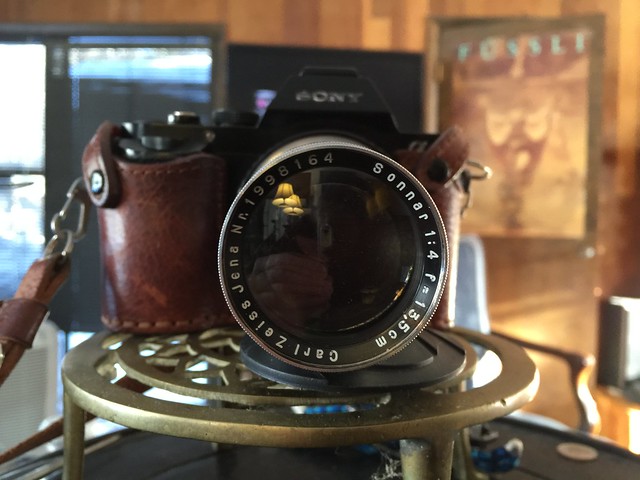
Zeus 135/4 by unoh7, on Flickr
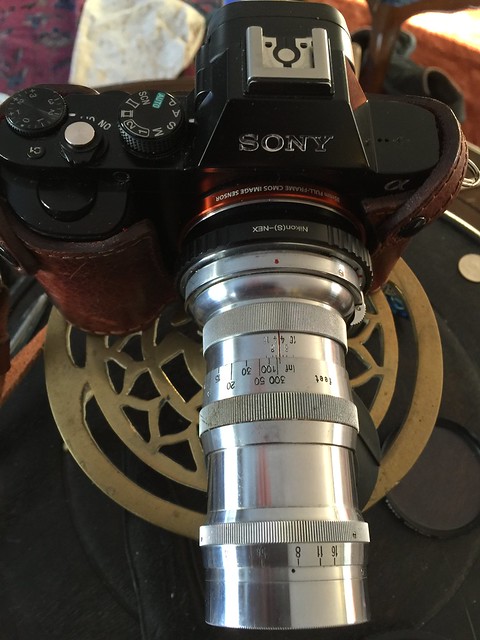
Zeiss 135/4 by unoh7, on Flickr
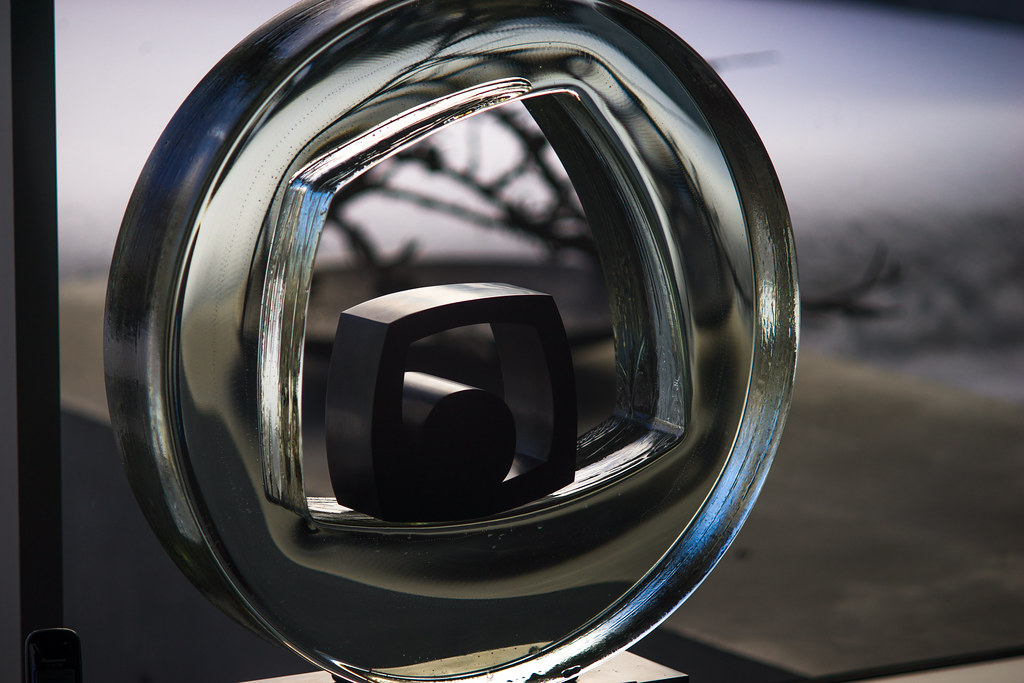
DSC08624 by unoh7, on Flickr
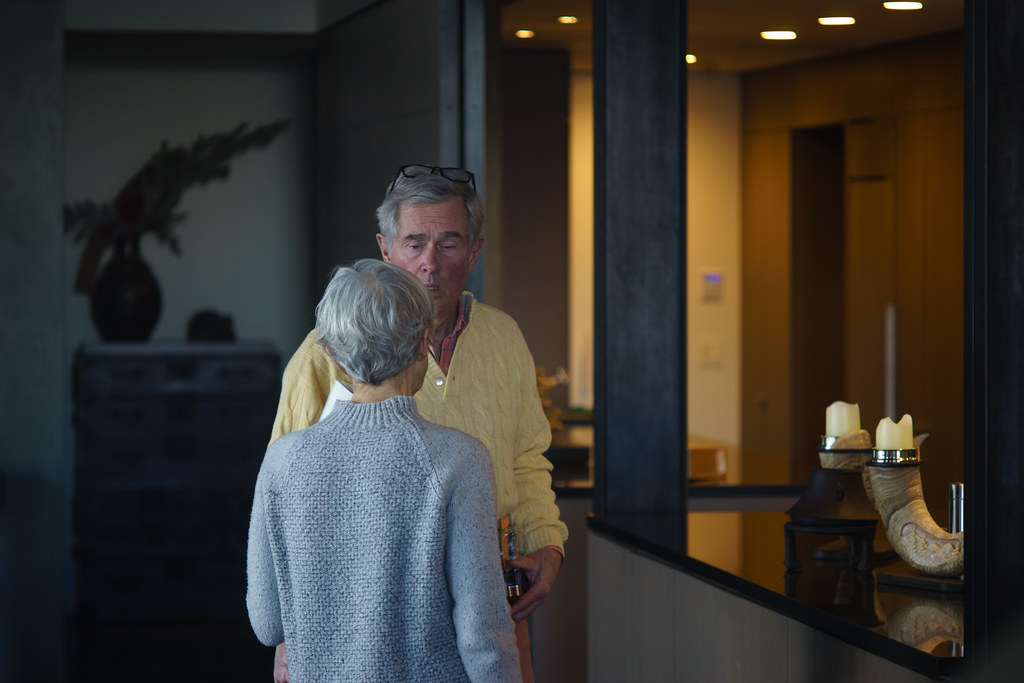
DSC08626 by unoh7, on Flickr
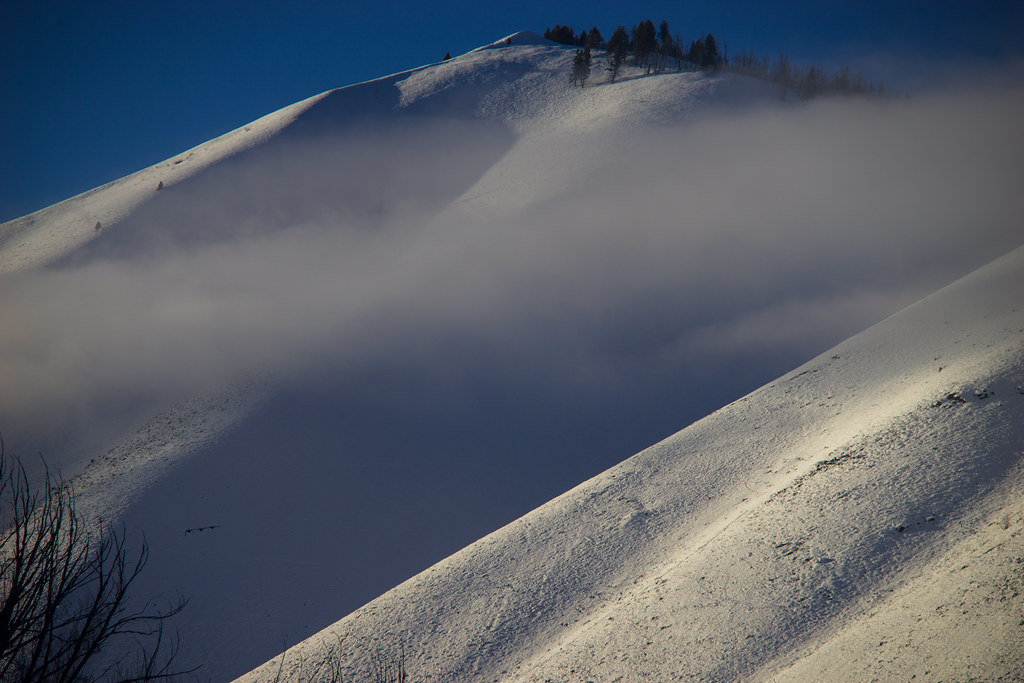
DSC08627 by unoh7, on Flickr
Great in the center, but the edges are weak compared to a good modern 135. These on the A7.mod
_________________
Making MFlenses safe for the letter *L*  |
|
| Back to top |
|
 |
scsambrook


Joined: 29 Mar 2009
Posts: 2167
Location: Glasgow Scotland
Expire: 2011-11-18
|
 Posted: Tue Jan 12, 2016 11:54 pm Post subject: Posted: Tue Jan 12, 2016 11:54 pm Post subject: |
 |
|
scsambrook wrote:
uhoh7 - thanks for the observations and nice photos! I've read about the focus shift peculiarity on the modern Zeiss 50/1.5 and wondered if the original had similar behaviour.
_________________
Stephen
Equipment: Pentax DSLR for casual shooting, Lumix G1 and Fuji XE-1 for playing with old lenses, and Leica M8 because I still like the optical rangefinder system. |
|
| Back to top |
|
 |
uhoh7

Joined: 24 Nov 2010
Posts: 1300
Location: Idaho, USA
|
 Posted: Wed Jan 13, 2016 3:24 am Post subject: Posted: Wed Jan 13, 2016 3:24 am Post subject: |
 |
|
uhoh7 wrote:
| scsambrook wrote: |
| uhoh7 - thanks for the observations and nice photos! I've read about the focus shift peculiarity on the modern Zeiss 50/1.5 and wondered if the original had similar behaviour. |
Stephen, the originals are all over the place I think, especially in LTM, meaning there is copy variation since these are so old now. There may have been some focus shift, but I have not read it alot. Brian at Leica Place love these lenses and he would know for sure. A contax mount on a contax body would likely be fine. Mine does not seem to shift. Of course you know on a A7 or any EVIL, focus shift is moot. It's really only M rangefinders where this is an issue.
I use a contax mount 1937 50/1.5 and the Amedeo M adapter. Focus is quite weird, and I have to train myself by shooting and chimping to see where I need to be. However it must not have been too hard because I do have good samples with the lens on the M9. The Contax ones are 200 bucks or even less.
But the modern Zeiss sonnar is widely used, and used very well, so obviously the shift is no big deal even on the M. Some people have kittens if the calibration is off, but really this is very predictable and since the focus throws are all the same practically, you learn, for example, WO this lens needs to go a tad toward infinity. 10 minutes practice is enough to learn the lens if you have a digital body, and what you learn will work for a film M. But if you only have a film M, the ZM 50/1.5 could be frustrating. Even so, shooting a variety of focus points, and making notes, you could learn it. 
My 135 APO needs a touch towards infinity. At first I was scared to use it. Now I do all the time, and don't miss any more than with the spot on lenses 
_________________
Making MFlenses safe for the letter *L*  |
|
| Back to top |
|
 |
scsambrook


Joined: 29 Mar 2009
Posts: 2167
Location: Glasgow Scotland
Expire: 2011-11-18
|
 Posted: Wed Jan 13, 2016 11:28 am Post subject: Posted: Wed Jan 13, 2016 11:28 am Post subject: |
 |
|
scsambrook wrote:
Thanks again for the observations, uhoh7. I smiled at your comment about people having kittens if the calibration is off - I have one fast Leica RF mount medium tele lens of Sonnar pattern which "back focuses" by about 20mm at close range as you stop down from wide open to F5.6; although noticeable when taking shots of rulers and tape measures, it never seems to matter in real-world photography. And I have another fast 85 (not a Sonnar design) which despite having a reputation for shifting focus is apparently immune to it.
_________________
Stephen
Equipment: Pentax DSLR for casual shooting, Lumix G1 and Fuji XE-1 for playing with old lenses, and Leica M8 because I still like the optical rangefinder system. |
|
| Back to top |
|
 |
pavko

Joined: 31 Jan 2011
Posts: 216
Location: PL
|
 Posted: Wed Jan 13, 2016 2:31 pm Post subject: Posted: Wed Jan 13, 2016 2:31 pm Post subject: |
 |
|
pavko wrote:
Does anyone know if lens mounted to Rollei A26 (Sonnar 40/3.5) is realy of sonnar design? Or is it just marketing and in fact it is tessar/ernostar derivative? |
|
| Back to top |
|
 |
|
|
